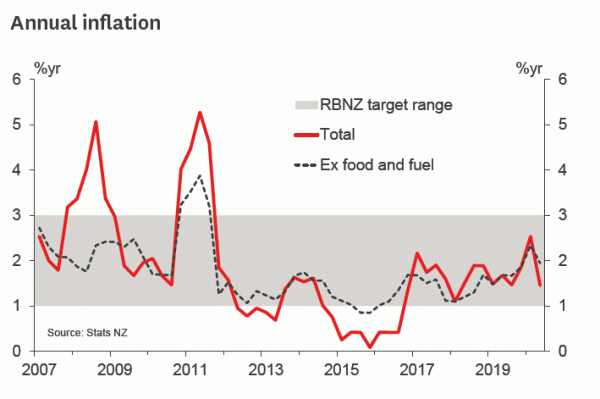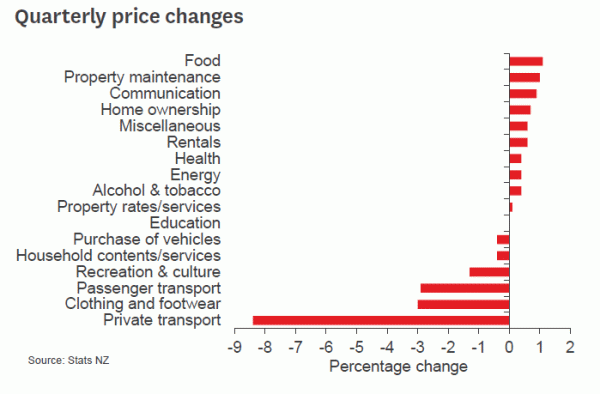- The Consumer Prices Index (CPI) fell 0.5% in the June quarter, taking the annual inflation rate down to 1.5%.
- Fuel prices fell sharply, and COVID-19 had a negative impact on prices on balance.
- We expect that inflation will remain subdued for some time, and that the Reserve Bank will need to take further easing measures in order to meet its targets.
The June quarter CPI report confirmed that inflation has slowed since the start of this year, but otherwise there wasn’t a lot of fresh insight for markets to chew on. The sharp drop in fuel prices, the biggest contributor to the slowdown, was a known factor, and there was always some uncertainty around what impact the COVID-19 lockdown would have on the measurement of prices. So while the drop in prices was a little less than expected, there was no market reaction.
The COVID-19 outbreak has been a shock to both demand (lower activity, higher unemployment) and supply (higher transport costs and supply chain disruptions). Our view is that the demand effects will dominate and that the outbreak will be a disinflationary force over the coming years. At the margin today’s figures support that view, though it’s early days yet. With the outlook for weak inflation and higher unemployment, there is nothing to stand in the way of further easing measures by the Reserve Bank. We expect an expansion of the RBNZ’s bond purchase programme in the coming months, and a move to a negative OCR next year
Details.
Consumer prices fell by 0.5% in the June quarter, bringing the annual inflation rate down from 2.5% to 1.5%. The various measures of ‘core’ inflation also slowed compared to last quarter, but they remained a little closer to the 2% midpoint of the RBNZ’s target range.
As expected, the biggest contributor by far was a 12% drop in petrol prices over the quarter. As the COVID pandemic took hold, world demand for oil plunged (and oil producers failed to agree on production cuts). Prices have risen from their lows in recent weeks, but are likely to stay low for an extended period.
The other major factor was that COVID, and the response to it, had a major impact on some prices. The closure of international borders has hit the hospitality sector hard, and accommodation prices fell by more than usual for this time of year (-14%). Train fares fell by almost half, with some rides made free during the lockdown period in April. In contrast, it seems that there may have been little impact on domestic airfares (though this data was suppressed due to commercial sensitivity).
Rents rose by 0.6% for the quarter, compared to a 1% rise last quarter. In late March the Government announced a six-month rent freeze for existing tenancies (though not for new ones). Stats NZ’s approach to modelling rents only partially captured the effects of the freeze; the September quarter is expected to include a greater impact.
While there has been talk that higher shipping costs would lead to higher prices for imported goods, there was little evidence of this in the June quarter. Prices for household goods were down, and clothing prices fell quite sharply in some instances, down 3% overall. The one real surprise was a sharp rise in mobile phone prices, for the second quarter in a row.
Not every aspect of the inflation picture looks benign. Food prices rose by 1.1% for the quarter, to be up 3.7% on a year ago. Food price inflation has picked up again recently, having been largely absent for many years prior. Strong world prices for exportable items are one likely driver; large minimum wage hikes are another. Given that food makes up about a fifth of the CPI, this trend bears watching.
Looking ahead, we expect overall inflation to slow further, bottoming at around zero by early next year. More importantly, we think that inflation will be slower to return to target than the RBNZ is forecasting. It’s likely that the economy will be running below its full potential for several years to come (largely due to the loss of international tourism), and employment will remain well short of its maximum sustainable level. With both of the RBNZ’s mandates arguing for more action, the path ahead is clear.














